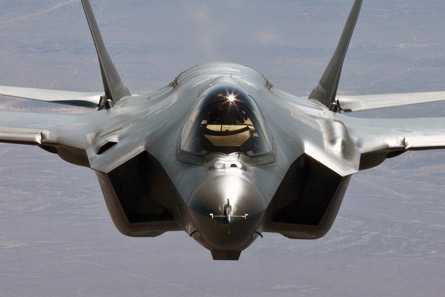The US Air Force's top civilian leaders say that orders for the Lockheed Martin F-35 Joint Strike Fighter will be cut if costs continue to rise.
"We have told the contractor and the programme office that there is no more money," USAF secretary Michael Donley told the US Senate Armed Services Committee on 20 March. "To the extent that if there continues to be cost growth or challenges it's going to be paid for by tails."
Donley said that a fiscal year 2013 budget decision to defer production of some aircraft will cost money, but that those numbers are not yet available. Some of the deferred conventional take-off and landing F-35As would be bought later, "or not at all", he added.
Frank Kendall, the US Department of Defense's procurement chief, told the same committee he believes the F-35 programme is "now on a course to stability". The DoD is continuing to work to reduce costs, he said.
 |
|---|
| © Lockheed Martin |
Outgoing USAF procurement chief David Van Buren said that Lockheed will be awarded a contract for only 25 aircraft under its sixth low-rate production lot, down from the 31 authorised by Congress in FY2012. But the DoD could award additional contracts for up to six of the remaining lot six aircraft at the same time as lot seven negotiations, he said.
The DoD will decide how many jets will ultimately be bought based on how well Lockheed does on cost reductions, Van Buren added.
The US Government Accountability Office's Michael Sullivan, who was also testifying, said that the cost of retrofitting aircraft that have been built will continue to rise. There are still four more years of potential changes due to discoveries during flight test, he said. However, he believes that the biggest discoveries have probably been found.
Meanwhile, Vice Adm Mark Skinner, principal military deputy to the assistant secretary of the US Navy for research, development and acquisition, testified that the service is continuing studies on a new "sixth-generation" F/A-XX fighter that would replace its Boeing F/A-18E/F Super Hornets in the 2030s.
Source: Flight International
















